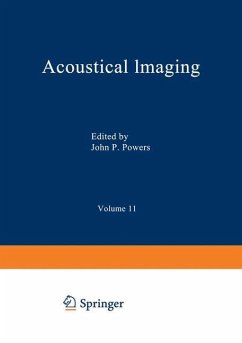- Gebundenes Buch
- Merkliste
- Auf die Merkliste
- Bewerten Bewerten
- Teilen
- Produkt teilen
- Produkterinnerung
- Produkterinnerung
A professor of astrophysics and a connoisseur of music offers an informal historical approach that shows the evolution of both theory and application at the intersection of physics and music.
Andere Kunden interessierten sich auch für
![Concert Halls and Opera Houses Concert Halls and Opera Houses]() Leo BeranekConcert Halls and Opera Houses130,99 €
Leo BeranekConcert Halls and Opera Houses130,99 €![Acoustics: Principles and Applications Acoustics: Principles and Applications]() Acoustics: Principles and Applications156,99 €
Acoustics: Principles and Applications156,99 €![Acoustical Imaging Acoustical Imaging]() P. AlaisAcoustical Imaging85,99 €
P. AlaisAcoustical Imaging85,99 €![American Standard Acoustical Terminology American Standard Acoustical Terminology]() American Standard Acoustical Terminology33,99 €
American Standard Acoustical Terminology33,99 €![Ultrasonics; 1960 Ultrasonics; 1960]() Benson CarlinUltrasonics; 196039,99 €
Benson CarlinUltrasonics; 196039,99 €![List of Edison Records [microform] List of Edison Records [microform]]() AnonymousList of Edison Records [microform]33,99 €
AnonymousList of Edison Records [microform]33,99 €![Acoustical Imaging Acoustical Imaging]() John P. PowersAcoustical Imaging42,99 €
John P. PowersAcoustical Imaging42,99 €-
-
-
A professor of astrophysics and a connoisseur of music offers an informal historical approach that shows the evolution of both theory and application at the intersection of physics and music.
Hinweis: Dieser Artikel kann nur an eine deutsche Lieferadresse ausgeliefert werden.
Hinweis: Dieser Artikel kann nur an eine deutsche Lieferadresse ausgeliefert werden.
Produktdetails
- Produktdetails
- Verlag: Taylor & Francis Ltd (Sales)
- 3rd edition
- Seitenzahl: 454
- Erscheinungstermin: 1. Juni 2009
- Englisch
- Abmessung: 238mm x 159mm x 35mm
- Gewicht: 772g
- ISBN-13: 9781420093476
- ISBN-10: 1420093479
- Artikelnr.: 26378234
- Herstellerkennzeichnung
- Libri GmbH
- Europaallee 1
- 36244 Bad Hersfeld
- gpsr@libri.de
- Verlag: Taylor & Francis Ltd (Sales)
- 3rd edition
- Seitenzahl: 454
- Erscheinungstermin: 1. Juni 2009
- Englisch
- Abmessung: 238mm x 159mm x 35mm
- Gewicht: 772g
- ISBN-13: 9781420093476
- ISBN-10: 1420093479
- Artikelnr.: 26378234
- Herstellerkennzeichnung
- Libri GmbH
- Europaallee 1
- 36244 Bad Hersfeld
- gpsr@libri.de
Ian Johnston spent his early years on a pineapple farm in southern Queensland, studied physics and mathematics at the Universities of Queensland and Sydney, and was appointed to a lecturing position at the University of Sydney in the late 1960s. He has been there ever since until he retired in 2001, except for two separate years in the U.S. at Cornell and Maryland Universities and one year in England at the Open University. His early research work was in theoretical astrophysics, but lately he has become interested in research into physics education, with particular emphasis on the role to be played by computers and other forms of information technology. He has written a deal of educational software as a member of several international consortiums, most notably the Maryland University Project in Physics and Educational Technology (M.U.P.P.E.T.) and the Consortium for Upper-Level Physics Software (CUPS). His interest in acoustics and music has been with him all his working life. In 1989 he made a series of six programs on Australian national radio, devoted to physics and music. It was from those programs that the idea of this book first arose. He has also made programs on other subjects of general interest, including astronomy and religion, science fiction and pseudo-science.
Why These and Not Others? Length of strings. Harmonious Intervals.
Pythagoras. Pentatonic and Pythagorean Scales. Ptolemy. Boethius. Music and
Scientific Method. Medieval Music. Josquin. Copernicus. Kepler. Galileo.
Vibrations. Pendulums and Strings. Consonance. Measurement of Frequency.
Standards of Pitch. Interlude 1. Brass Instruments. Harmonies of a
Mechanical Universe. Mechanical Forces. Energy. Oscillation Theory.
Mersenne's Laws. Baroque Music. Instruments. Equal Temperament. Interlude
2. The Piano. Overtones of Enlightenment. Newton and the Age of Reason.
Visualization of Oscillations. Overtones. Harmonic Analysis and Synthesis.
Rameau and Harmony. End of the Enlightenment. Interlude 3. The Violin.
Over the Waves. Wave Theory. Speed of Sound. Wave Properties: Reflection,
Absorption, Diffraction. Huygens and Young. Standing Waves. Interlude 4.
Acoustics in Architecture. The Romance of Electricity. The Romantic
Movement. Study of Electricity, Faraday. Acoustics. Energy Coupling and
Acoustic Impedance. Mismatch Theorem. Standing Waves in Air Columns.
Interlude 5. Woodwind Instruments. Summertime in Heidelberg. Wagner and
Helmholtz. Theory of Resonance. Working of the Ear. Pitch Recognition and
Discrimination. Psycho-Acoustics. Theory of Consonance. Interlude 6.
Percussion Instruments. O brave New World. Communication Devices:
Microphones, Gramophones, Valves, Transistors. Effect on Music. Modern
Sound Engineering: Frequency Response, Transients. Technology. Interlude 7.
Electronic Instruments. I think, Therefore I am. Theory of Communication.
Information. Computers. Computer Composition. Interlude 8. Sublimest of
Instruments, the Voice.
Pythagoras. Pentatonic and Pythagorean Scales. Ptolemy. Boethius. Music and
Scientific Method. Medieval Music. Josquin. Copernicus. Kepler. Galileo.
Vibrations. Pendulums and Strings. Consonance. Measurement of Frequency.
Standards of Pitch. Interlude 1. Brass Instruments. Harmonies of a
Mechanical Universe. Mechanical Forces. Energy. Oscillation Theory.
Mersenne's Laws. Baroque Music. Instruments. Equal Temperament. Interlude
2. The Piano. Overtones of Enlightenment. Newton and the Age of Reason.
Visualization of Oscillations. Overtones. Harmonic Analysis and Synthesis.
Rameau and Harmony. End of the Enlightenment. Interlude 3. The Violin.
Over the Waves. Wave Theory. Speed of Sound. Wave Properties: Reflection,
Absorption, Diffraction. Huygens and Young. Standing Waves. Interlude 4.
Acoustics in Architecture. The Romance of Electricity. The Romantic
Movement. Study of Electricity, Faraday. Acoustics. Energy Coupling and
Acoustic Impedance. Mismatch Theorem. Standing Waves in Air Columns.
Interlude 5. Woodwind Instruments. Summertime in Heidelberg. Wagner and
Helmholtz. Theory of Resonance. Working of the Ear. Pitch Recognition and
Discrimination. Psycho-Acoustics. Theory of Consonance. Interlude 6.
Percussion Instruments. O brave New World. Communication Devices:
Microphones, Gramophones, Valves, Transistors. Effect on Music. Modern
Sound Engineering: Frequency Response, Transients. Technology. Interlude 7.
Electronic Instruments. I think, Therefore I am. Theory of Communication.
Information. Computers. Computer Composition. Interlude 8. Sublimest of
Instruments, the Voice.
Why These and Not Others? Length of strings. Harmonious Intervals.
Pythagoras. Pentatonic and Pythagorean Scales. Ptolemy. Boethius. Music and
Scientific Method. Medieval Music. Josquin. Copernicus. Kepler. Galileo.
Vibrations. Pendulums and Strings. Consonance. Measurement of Frequency.
Standards of Pitch. Interlude 1. Brass Instruments. Harmonies of a
Mechanical Universe. Mechanical Forces. Energy. Oscillation Theory.
Mersenne's Laws. Baroque Music. Instruments. Equal Temperament. Interlude
2. The Piano. Overtones of Enlightenment. Newton and the Age of Reason.
Visualization of Oscillations. Overtones. Harmonic Analysis and Synthesis.
Rameau and Harmony. End of the Enlightenment. Interlude 3. The Violin.
Over the Waves. Wave Theory. Speed of Sound. Wave Properties: Reflection,
Absorption, Diffraction. Huygens and Young. Standing Waves. Interlude 4.
Acoustics in Architecture. The Romance of Electricity. The Romantic
Movement. Study of Electricity, Faraday. Acoustics. Energy Coupling and
Acoustic Impedance. Mismatch Theorem. Standing Waves in Air Columns.
Interlude 5. Woodwind Instruments. Summertime in Heidelberg. Wagner and
Helmholtz. Theory of Resonance. Working of the Ear. Pitch Recognition and
Discrimination. Psycho-Acoustics. Theory of Consonance. Interlude 6.
Percussion Instruments. O brave New World. Communication Devices:
Microphones, Gramophones, Valves, Transistors. Effect on Music. Modern
Sound Engineering: Frequency Response, Transients. Technology. Interlude 7.
Electronic Instruments. I think, Therefore I am. Theory of Communication.
Information. Computers. Computer Composition. Interlude 8. Sublimest of
Instruments, the Voice.
Pythagoras. Pentatonic and Pythagorean Scales. Ptolemy. Boethius. Music and
Scientific Method. Medieval Music. Josquin. Copernicus. Kepler. Galileo.
Vibrations. Pendulums and Strings. Consonance. Measurement of Frequency.
Standards of Pitch. Interlude 1. Brass Instruments. Harmonies of a
Mechanical Universe. Mechanical Forces. Energy. Oscillation Theory.
Mersenne's Laws. Baroque Music. Instruments. Equal Temperament. Interlude
2. The Piano. Overtones of Enlightenment. Newton and the Age of Reason.
Visualization of Oscillations. Overtones. Harmonic Analysis and Synthesis.
Rameau and Harmony. End of the Enlightenment. Interlude 3. The Violin.
Over the Waves. Wave Theory. Speed of Sound. Wave Properties: Reflection,
Absorption, Diffraction. Huygens and Young. Standing Waves. Interlude 4.
Acoustics in Architecture. The Romance of Electricity. The Romantic
Movement. Study of Electricity, Faraday. Acoustics. Energy Coupling and
Acoustic Impedance. Mismatch Theorem. Standing Waves in Air Columns.
Interlude 5. Woodwind Instruments. Summertime in Heidelberg. Wagner and
Helmholtz. Theory of Resonance. Working of the Ear. Pitch Recognition and
Discrimination. Psycho-Acoustics. Theory of Consonance. Interlude 6.
Percussion Instruments. O brave New World. Communication Devices:
Microphones, Gramophones, Valves, Transistors. Effect on Music. Modern
Sound Engineering: Frequency Response, Transients. Technology. Interlude 7.
Electronic Instruments. I think, Therefore I am. Theory of Communication.
Information. Computers. Computer Composition. Interlude 8. Sublimest of
Instruments, the Voice.

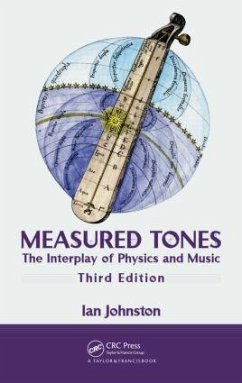
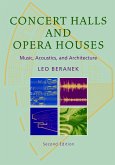
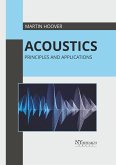
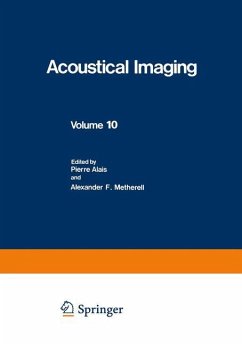
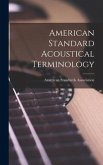
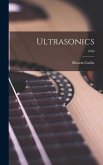
![List of Edison Records [microform] List of Edison Records [microform]](https://bilder.buecher.de/produkte/65/65634/65634719m.jpg)
